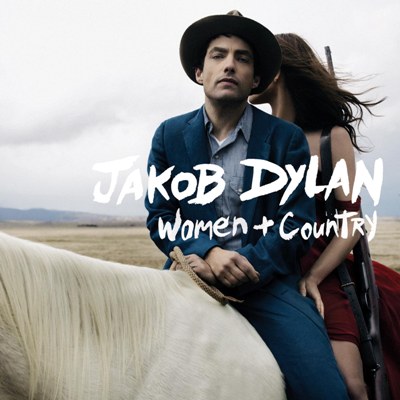
While Jakob Dylan may possess a surname and lineage of rock and roll royalty, after more than two decades of fronting The Wallflowers and his recent, well-received transition to modern troubadour, journalists—myself included—really should be able to review his new record, Women and Country, without feeling compelled to mention his famous father. (And maybe the next time around I’ll manage to avoid the temptation all together.)
Dylan’s first solo effort, 2008’s Seeing Things, offered a fine collection of acoustic arrangements that intimately showcased his songwriting in a minimalist context. On Women and Country, Dylan aimed to take that same traditional sound and expand upon it. “I knew going into this record I wanted to hear something full and vibrant,” says Dylan. “I wanted for it to be as big and beautiful sounding as it could with instrumentation.” To achieve this sound, Dylan enlisted legendary producer T-Bone Burnett to take the production reigns and indie goddess Neko Case, along with Kelly Hogan, to provide backing vocals.
Women and Country begins close to where Seeing Things left off. “Nothing But the Whole Wide World” and “Down on Our Own Shield” are straightforward, almost old-timey, folk songs, but Dylan and Burnett add a new dimension and drive with more prominent percussion behind Dylan’s acoustic strumming. Case and Hogan’s diverse vocals provide the lushness and texture that complete these songs. At times, their voices drift in and out like a soft breeze through a window, and at other moments, they meet Dylan’s vocals in the forefront, providing a gentle sweetness to match his earthy, straining tone.
By the record’s third track, Dylan puts Seeing Things squarely behind him and begins to embark on entirely new territory. The grim and nearly danceable “Lend a Hand” features seedy and demonic horns that would fit perfectly in a Tom Waits song. The bittersweet “Smile When You Call Me That” walks a tightrope between pop song and country ballad, with Dylan trying to reconcile a relationship steeped in dysfunction. “I’m drunk and you’re insane/I can’t quit and you won’t change/Ain’t no half-hearted Romeo/Why do you treat me so?/Like our love’s a joke/And it’s too much to laugh/Well, can’t you at least smile/When you call me that?”
But Dylan is at his very best on Women and Country when he uses dark, rural imagery to convey the idea that what men hold most dear—notions of country, home, and identity, as well as possessions and even women—is at stake and in imminent danger. “Left turn off a county road/Weathervane is to the north/In the shade of sycamore/Is the house where you were born,” opens Dylan on “We Don’t Live Here Anymore”, a foreboding song that pounds along and features haunting backing vocals on the chorus by Case and Hogan. “Everybody’s Hurting”, with a somber fiddle and beautiful harmonies, continues on in this vein of what might be dubbed “Bleak Americana,” carrying on that long tradition of depicting the plight of the downtrodden. “We’ve hunted these hills dry/We’ve long outlasted the winter and our last woodpile/Only one thing’s certain/That’s everybody, everybody’s hurting.”
Women and Country owes a great deal to the rich traditions of country, blues, and folk, but Dylan does more than simply reproduce these genres. He borrows from them in order to voice his own observations in a language that speaks to all of us. By looking back, Jakob Dylan has taken a great leap forward as an artist.
